Paris has one of the densest metro networks in the world, with 245 stations within 86.9 km2 (34 sq mi) of the city of Paris. Lines are numbered 1 to 14, with two minor lines, 3bis and 7bis. The minor lines were originally part of lines 3 and 7 but became independent.
Paris is the second busiest metro system in Europe, after Moscow. It carries 4.5 million passengers a day, and an annual total of 1.479 billion (2009). Châtelet – Les Halles, with 5 Métro lines and three RER commuter rail lines, is the world's largest underground station.
The first line opened without ceremony on 19 July 1900, during the World Fair (Exposition Universelle). The system expanded quickly until the First World War and the core was complete by the 1920s. Extensions into suburbs (together with Line 11) were built in the 1930s.
The network reached saturation after World War II. The Métro introduced newer trains to allow higher traffic. Further improvements are limited by the design of the network, such as short distances between stations. The solution was a second network, the RER commuter rail, developed from the 1960s.
Métro is the abbreviated name of the company which originally operated most of the network: La Compagnie du chemin de fer métropolitain de Paris, shortened to "Le Métropolitain". That was quickly abbreviated to métro, which became a common word also used to designate all subway networks (or any public passenger transportation systems operated on autonomous ways) in France or elsewhere (a genericized trademark).
The Métro today is operated by the Régie autonome des transports parisiens (RATP), a public transport authority that also operates part of the RER network, bus services and light rail lines. The name métro proved very popular and was adopted in many languages, making it the most used word for a (generally underground) urban transit system. It is also possible that "Compagnie du chemin de fer métropolitain" was copied from the name of London's pioneering underground railway company,[citation needed] the Metropolitan Railway, which had already been in business for almost 40 years prior to the inauguration of Paris's first line.
Since the Métro was built to comprehensively serve the city inside its walls the stations are very close: 548 metres apart on average, ranging down to 424 m on line 4 and up to one kilometre on the newer line 14, meaning Paris is heavily pockmarked with stations. In contrast, the surrounding suburbs are only served by later line extensions, thus traffic from one suburb to another must pass through the city. The slow commercial speed effectively prohibits service to the greater Paris area. The Paris Métro is mostly underground (197 km of 214 km). Surface runs consists of the viaduct sections within Paris (on lines 1, 2, 5 & 6) and the suburban ends of lines 1, 5, 8, and 13. The system's tunnels are relatively close to the surface due to the variable nature of Paris's earth which does not permit deep digging; exceptions include parts of line 12 under the hill of Montmartre and line 2 under Ménilmontant. Instead the tunnels follow the twisting lie of the streets, during construction in 1900 a minimum radius of curvature of 75 metres was imposed, though this low standard was not adhered to at Bastille and Notre-Dame-de-Lorette. Like the New York Subway, and in contrast with the London Underground the Paris Métro mostly uses two-way tunnels. As in most French métro and tramway systems, trains circulate on the right; though the SNCF's run in the opposite direction. The internal gauge of the rails is 1.435 metres, a metro standard. Electricity is supplied by a third rail which carries a constant tension of 750 volts. The width of the carriages, 2.4 metres across, is relatively narrow (as opposed to 2.9m in Lyon) and lines 1, 4 and 14 have capacities between six and seven hundred passengers; against two thousand six hundred on the Altéo MI 2N trains of RER A. In contrast to those of the New York and London metros, all of Paris's lines have the same dimensions. Five Parisian lines (1, 4, 6, 11 and 14) are capable of running on a pneumatic system developed by the RATP in the 1950s; it is not currently employed but was later exported for use on the Métros of Montréal, Santiago and Mexico City.
Paris is the second busiest metro system in Europe, after Moscow. It carries 4.5 million passengers a day, and an annual total of 1.479 billion (2009). Châtelet – Les Halles, with 5 Métro lines and three RER commuter rail lines, is the world's largest underground station.
The first line opened without ceremony on 19 July 1900, during the World Fair (Exposition Universelle). The system expanded quickly until the First World War and the core was complete by the 1920s. Extensions into suburbs (together with Line 11) were built in the 1930s.
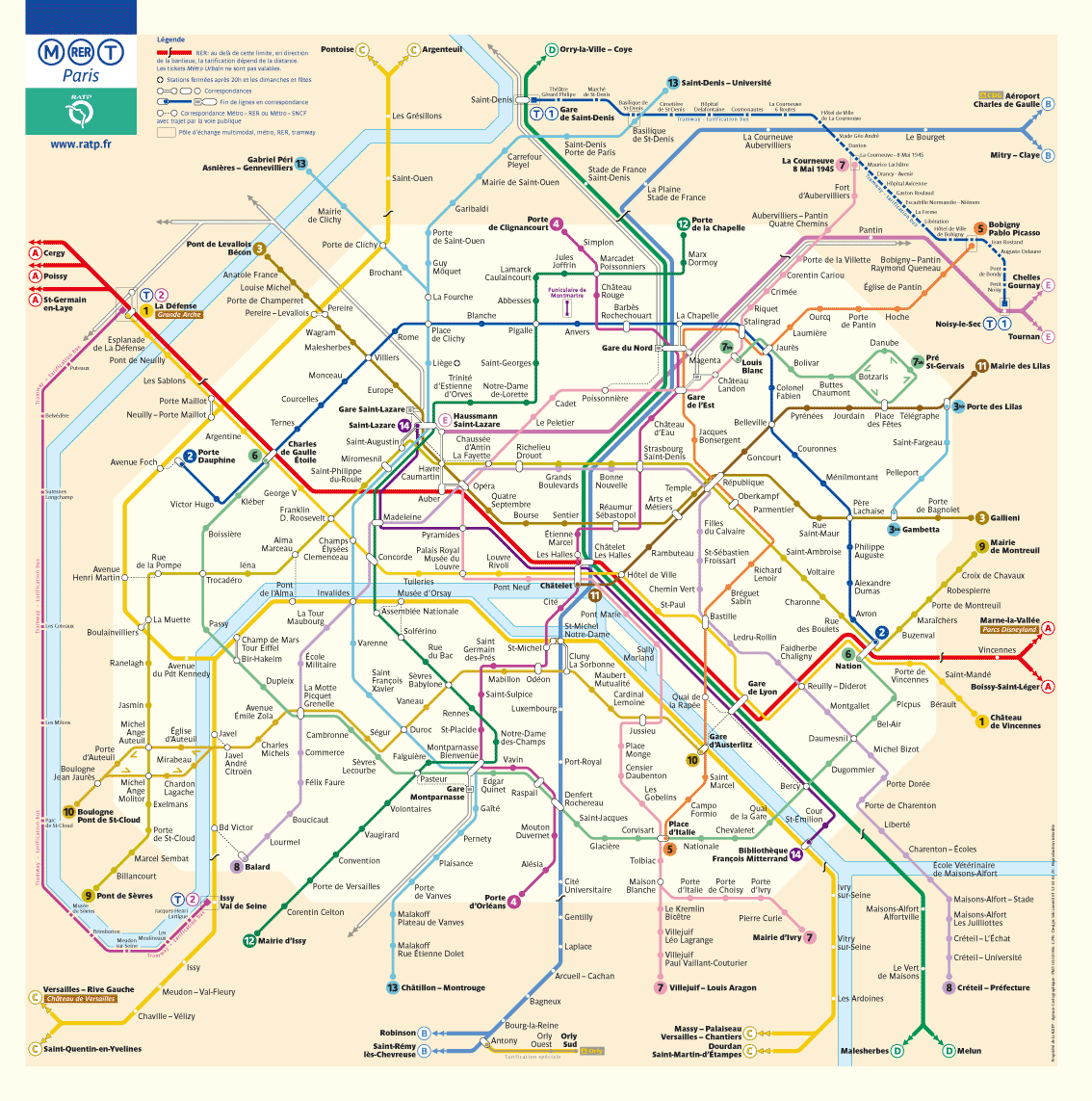 Paris Metro Map |  Métro de Paris |  Paris Metro System | 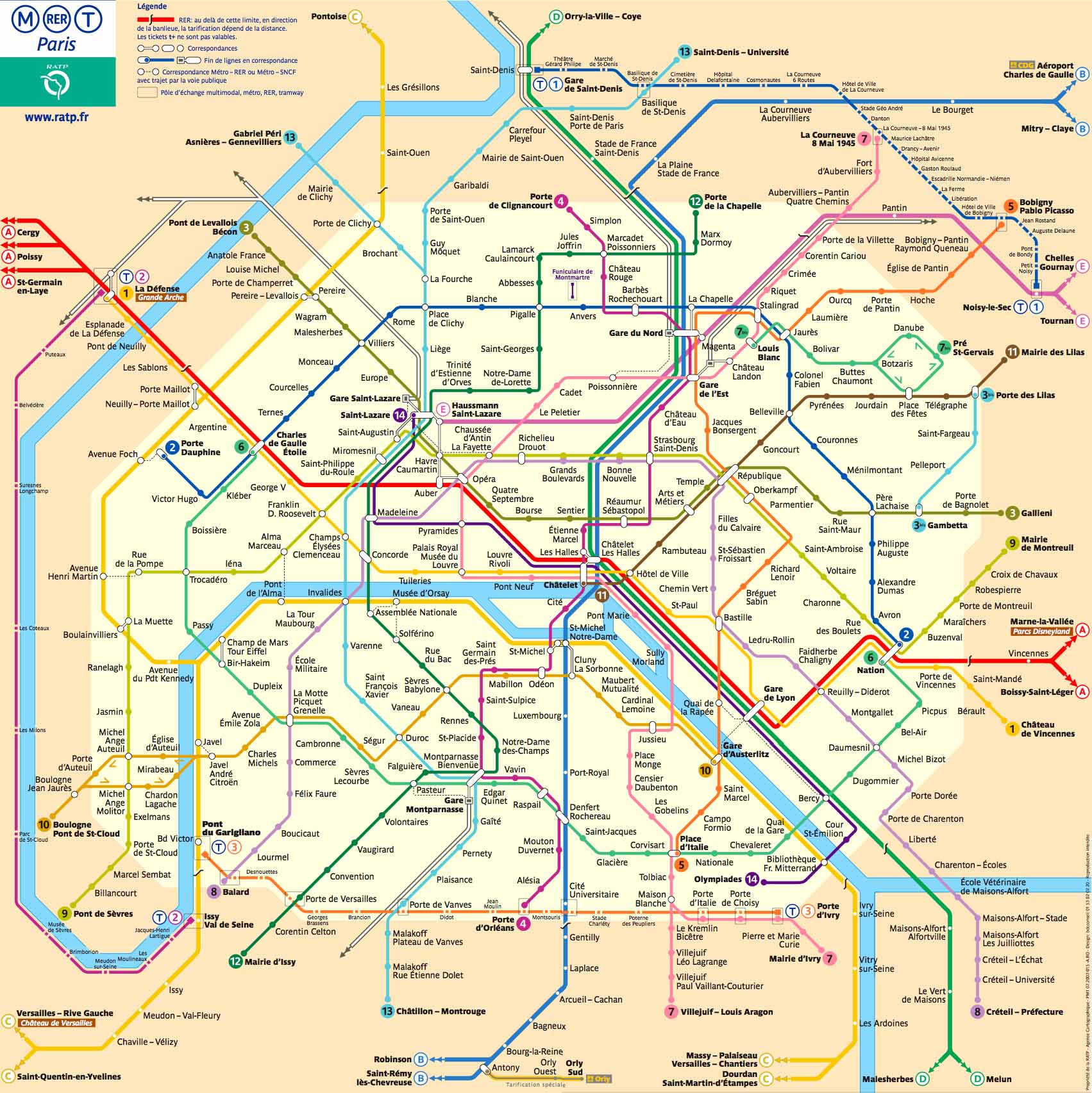 Index -, Paris METRO PLAN | 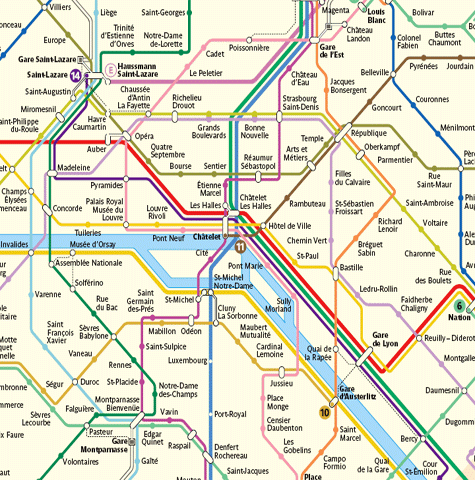 Paris metro map |
 Locate a specific Paris metro |  paris-metropolitan-antique- |  Route Planner from Paris |  File:Paris Metro Simplon.jpeg |  [edit] By Métro |
The Métro today is operated by the Régie autonome des transports parisiens (RATP), a public transport authority that also operates part of the RER network, bus services and light rail lines. The name métro proved very popular and was adopted in many languages, making it the most used word for a (generally underground) urban transit system. It is also possible that "Compagnie du chemin de fer métropolitain" was copied from the name of London's pioneering underground railway company,[citation needed] the Metropolitan Railway, which had already been in business for almost 40 years prior to the inauguration of Paris's first line.
 3) Map of central Paris Metro | 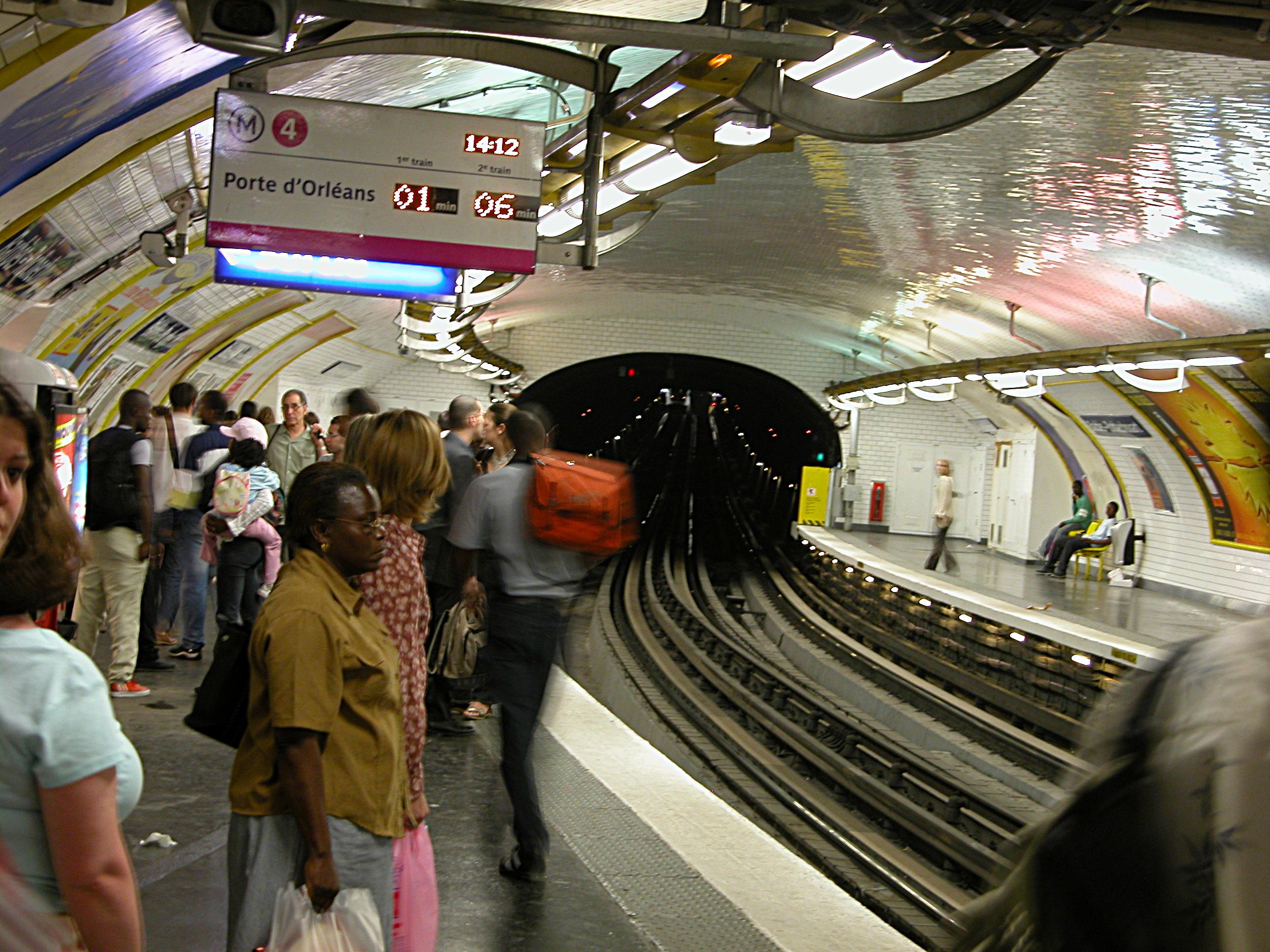 Now the metro to Les Halles | File:Paris metro - Marcel |  metro system in Paris. | 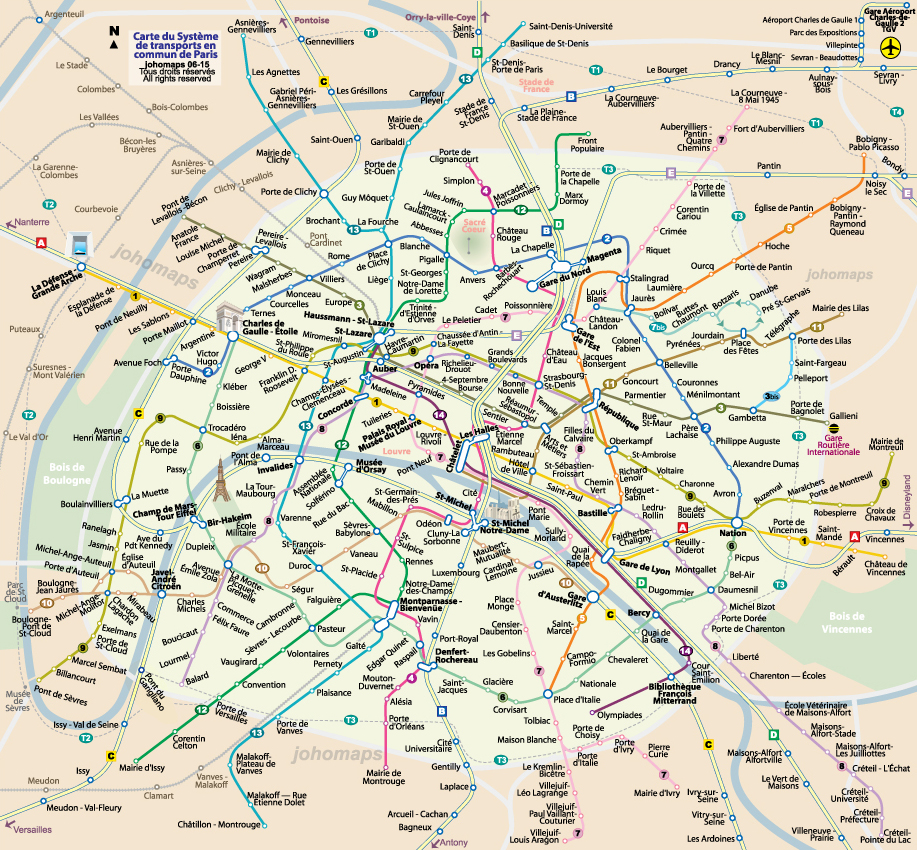 Carte du Metro de Paris |
 Plan du métro de Paris | 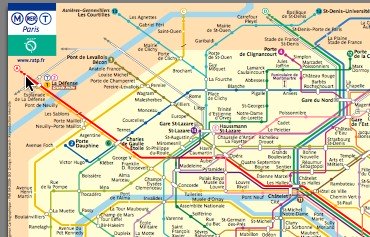 Mini Paris Metro Map | 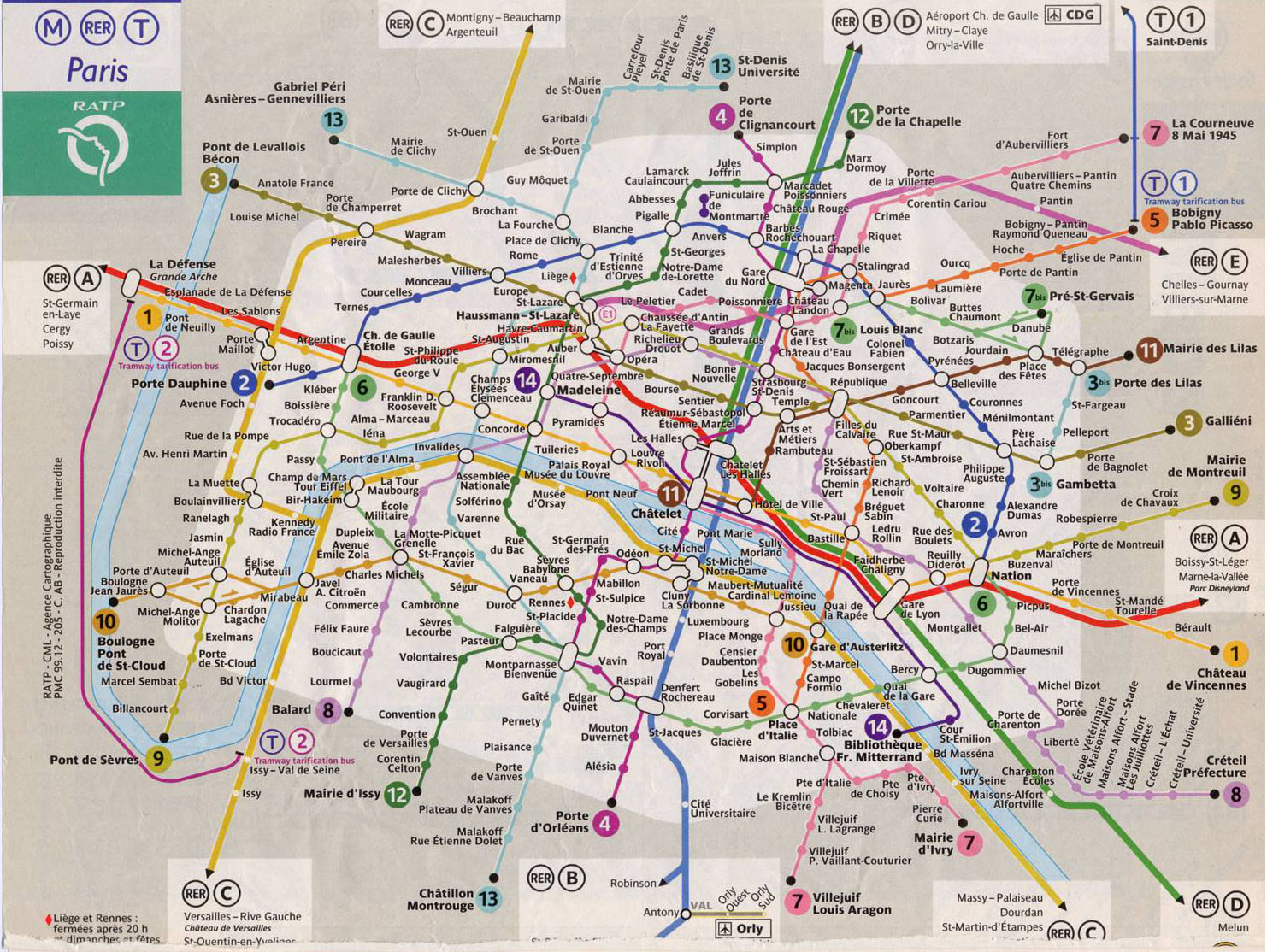 France \x26amp; Paris train rail maps |  BYU in Paris: Avant: Le Métro | 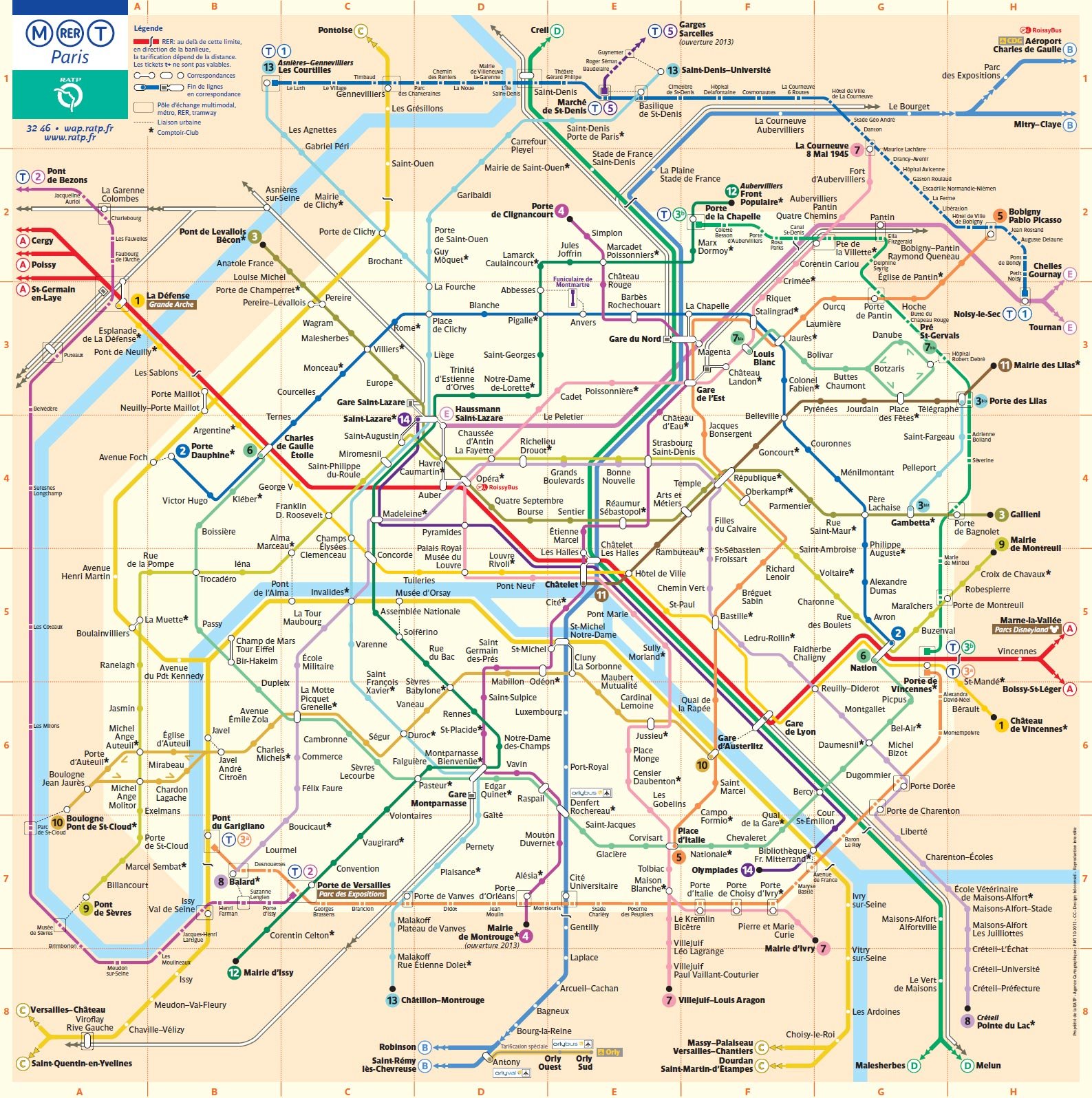 Paris Metro Map |
No comments:
Post a Comment